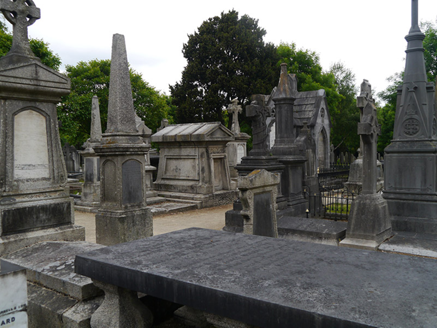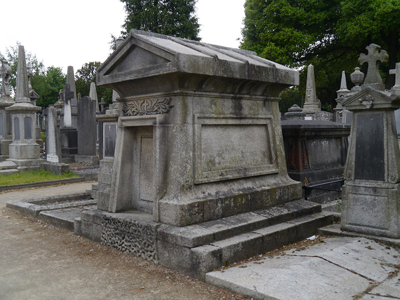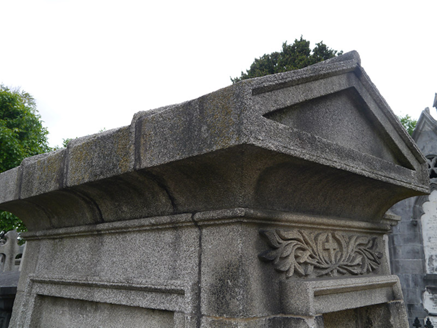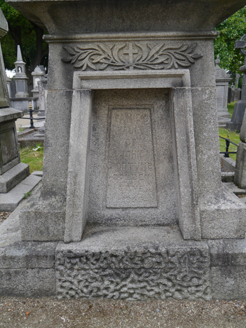Survey Data
Reg No
50130101
Rating
Regional
Categories of Special Interest
Architectural, Artistic, Social
Original Use
Mausoleum
In Use As
Mausoleum
Date
1865 - 1870
Coordinates
315050, 236909
Date Recorded
12/06/2018
Date Updated
--/--/--
Description
Freestanding Egyptian-revival mausoleum, erected c. 1866. Pitched granite roof having pole-moulded ribs and ridge and overhanging cavetto cornice, and with pedimented gables. Tapered granite walling on sweeping plinth, having trapezoidal doorway to east end and similar blind to west. Rectangular inscribed panels to east and west long sides, with raised surrounds. Entrance has leaf and cross moulding over doorway, with inscription to closure and has vermiculated rustication to plinth beneath. Stepped ashlar granite base to monument. Located in eastern part of Glasnevin Cemetery.
Appraisal
A notable Egyptian-Revival funerary monument, erected over the family vault of John Fortune. The style represents a relatively unusual choice within the cemetery, although it enjoyed some popularity in the mid-nineteenth century and is representative of the Victorian penchant for exotic styles, and the greater range of architectural influences in the age of the expansion of the British Empire. Originally known as Prospect Cemetery, this burial ground was opened in 1832 following a successful campaign by Daniel O'Connell to establish Dublin's first civic, non-denominational cemetery. Strongly geometrical, the monument is well-proportioned and executed to high standards of craftsmanship and is one of a cluster of architecturally notable memorials in this early part of the cemetery, which was known as Curran Square, offering premium plots that reflected the status and social standing of those interred there during the early decades of the cemetery's operation. The monument makes a strong contribution to the architectural and stylistic variety of this, one of Europe's most notable civic cemeteries.







